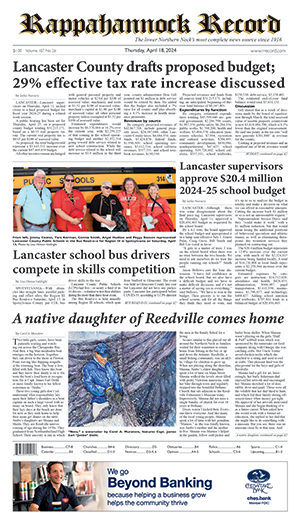by John Howard Farmer
Visit the Irvington Baptist Church website
Fall back this week?
[dropcap]S[/dropcap]ending you this epistle from the volumes of holiday murmurings in my files.
It is truly hard to maintain youth activities in all churches, given the pressure of four-season athletics, family life and school events. Dare I suggest that a child’s Christian education is more important than everything else over which we stress in their lives? …Short sermon. Too short.
Congregations struggle to maintain attendance at every possible level of interest. Be creative. Keep ‘em coming ‘til Jesus finds them, they him. Every effort to capture, entertain and educate our youth is an investment in things eternal.
Jesus said, “Look around you! Vast fields are ripening all around us and are ready now for the harvest. The harvesters are paid good wages and the fruit they harvest is people brought to eternal life,” (John 4:35-36).
At Irvington, years spent, we started having a Holy-Ghost Winnie Roast for our teens and a craft night with kid-food for our youngsters on Sunday evening on the Irvington Green across the road and renamed it our Fall Festival. This year, however, the weatherman did not want us to celebrate outdoors—thus we moved our festival picnic indoors; with pumpkin painting in the parking lot and a hayride through the neighborhood with deacon Ric Conkle driving his tractor and wagon with hay provided by Page Rudolph and son, Joey.
The Coan Baptist Church pastor once notified his church kids that they were to wear Biblical-theme costumes to a Halloween party. Well, everybody knows that today’s kids are smarter than your average of yester-kids, (certainly we pastors). One young lad arrived at church wrapped as a mummy. “Nay, nay,” said the preacher, “I asked you to dress as a Biblical character, didn’t I?”
The lad responded, “I did pastor Lee, I am Lazarus!”
Halloween stems from a corruption of All Hallows Eve, November 1. “All Hallows Day” (or “All Saints Day”) is a day of observance in honor of Saints. “In the 5th century BC, in Celtic Ireland, summer officially ended on October 31st. The disembodied spirits of all those who had died throughout the preceding year would come back in search of living bodies to possess for the next year. It was believed to be their only hope for an afterlife. All laws of space and time were suspended during this time, allowing the spirit world to intermingle with the living.
Those still living did not want to be possessed. On the night of October 31, villagers would extinguish the fires in their homes, to make them cold and undesirable. They would then dress up in all manner of ghoulish costumes and noisily parade around the neighborhood, being as destructive as possible in order to frighten away spirits looking for bodies to possess.”
The Romans adopted the Celtic practices. In the first century AD, Celtic custom was paired with October celebrations of other Roman traditions, such as their day to honor Pomona, the Roman goddess of fruit and trees. The symbol of Pomona is the apple, which might explain the origin of our modern tradition of bobbing for apples on Halloween.
Over time the practice became more ritualized; belief in spirit possession waned, the practice of dressing up like hobgoblins, ghosts and witches took on a more celebratorial role.
1840s Irish immigrants fleeing their country’s potato famine brought Halloween to America. At that time, the favorite pranks in New England included tipping over outhouses and unhinging fence gates.
Trick-or-treating is thought to have originated with a ninth-century European custom called souling. On November 2, All Souls Day, early Christians would walk from village to village begging for soul cakes, made of square pieces of bread with currants. The more soul cakes the beggars would receive, the more prayers they would promise to say on behalf of the dead relatives of the donors. It was believed that the dead remained in limbo for a time after death and that prayer, even by strangers, could expedite a soul’s passage to heaven.
The Jack-O-Lantern probably borrows from Irish folklore. It is told that a man named Jack was notorious as a drunkard and trickster, who tricked Satan into climbing a tree. Jack then carved an image of a cross in the tree’s trunk, trapping the devil up the tree. Jack made a deal with the devil that, if he would never tempt him again, he would promise to let him down the tree.
According to the folk tale, after Jack died, he was denied entrance to heaven because of his evil ways, but he was also denied access to hell because he had tricked the devil. Instead, the devil gave him a single ember to light his way through the frigid darkness. The ember was placed inside a hollowed-out turnip to keep it glowing longer.
The Irish originally used turnips for “Jack’s lanterns.” Immigrant Americans found that pumpkins were far more plentiful than turnips. So it is thought that the Jack-O-Lantern in America was a hollowed-out pumpkin, lit from within.
Halloween did not grow out of evil practices, though some dark cults may have adopted Halloween as their favorite holiday. It grew out of Celtic rituals celebrating a new year and out of Medieval European prayer rituals. Many congregations have Halloween parties or pumpkin carving events for the kids. After all, the day itself is only as evil as one cares to make it.












